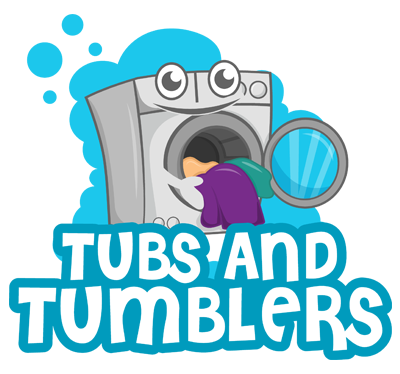
Revolutionize Your Laundry Day: The Pickup and Delivery Laundry Service Solution
April 13, 2024
How to Wash a Comforter: Step-by-Step Instructions for Fresh Bedding
April 26, 2024Adhering to laundromat etiquette ensures a pleasant experience for everyone involved, highlighting the importance of etiquette, laundry service, and laundry care in shared spaces. As laundromat tips often suggest, while it’s acceptable to temporarily leave your laundry, using a timer is essential to not forget your wash and reduce inconvenience for others.
Considering additional services like Fluff & Fold can enrich your laundry routine by providing convenient pickup and delivery options, alongside beneficial commercial laundry solutions. This aspect of laundry service not only elevates your laundry care experience but also adheres to the principles of laundromat etiquette, ensuring a harmonious environment for all users.
Timely Removal of Clothes
When using a laundromat, managing the time it takes for your laundry cycles is crucial to maintaining proper laundromat etiquette. Here are some guidelines to ensure timely removal of clothes:
- Cycle Duration Awareness:
- Wash cycles typically last between 25-40 minutes, and drying cycles can extend up to an hour. Always check the machine’s settings to note the exact time.
- Setting Alarms:
- Before leaving the laundromat, set a timer on your phone for the duration of the cycle. This prevents your clothes from being left unattended once the cycle ends, reducing the risk of theft or inconvenience to others.
- Prompt Removal:
- As soon as the alarm rings, be ready to remove your clothes promptly. If you must leave the laundromat temporarily, ensure you return before the cycle ends.
- In cases where clothes are left beyond 15 minutes after the cycle, not only does it pose a security risk, but it’s also considered rude and disruptive to other users.
By adhering to these simple steps, you contribute to a smoother, more respectful experience for everyone at the laundromat.
Handling of Unattended Clothes
Handling unattended clothes in a laundromat can be a delicate situation. Here are some guidelines to consider:
- Laundromat Policies and Security Measures:
- Most laundromats discourage leaving clothes unattended due to the risk of theft or damage. Look for posted signs about policies and observe any security measures like cameras.
- If clothes are left in a machine post-cycle, the general rule is to wait before taking any action, as removing them too soon can be seen as inappropriate.
- Steps for Dealing With Unattended Laundry:
- Wait Time: Allow a grace period of about 20 minutes after the cycle ends before touching someone else’s laundry.
- Handling Clothes: If you must move them, place the clothes on a clean surface near the machine or in a basket, if available. Avoid the floor to keep the clothes clean and respect the owner’s property.
- Communication: Leave a note with the time and machine number to inform the owner of where their clothes have been moved.
- Personal Responsibility:
- Always check for items left behind in the washer or dryer before starting your cycle. This prevents damage to the next load and avoids any potential disputes.
- f you encounter the owner while moving their laundry, politely explain the situation. Avoid confrontations and handle the interaction with calmness and respect.
By following these guidelines, you can help maintain a respectful and efficient environment in the laundromat.
Proper Use of Detergent and Cleaning Up
When you’re at the laundromat, using detergents and cleaning agents correctly is not just about keeping your clothes clean but also about respecting the equipment and the next user. Here’s how you can optimize your detergent use and maintain cleanliness:
- Detergent Dosage:
- Use the recommended amount of detergent based on the machine type, load size, and water hardness. For high-efficiency machines, a smaller amount is often sufficient, while standard machines might require a bit more.
- Consider the soil level of your clothes; heavily soiled laundry might need a slight increase in detergent.
- Cleaning Protocols:
- Always check for and clean out the lint trap before and after using the dryer to prevent fire hazards and maintain efficiency.
- Wipe down the washer and dryer drums, doors, and handles after use to remove any detergent or fabric softener spills.
- Disposal and Maintenance:
- Properly dispose of empty detergent bottles, used fabric softener sheets, and lint in designated trash receptacles.
- If you notice spills or debris on counters and floors, clean them up immediately to prevent accidents and maintain a tidy space.
By following these simple steps, you ensure a safer, cleaner, and more efficient use of the laundromat facilities, making the experience better for everyone.
Respecting Shared Spaces
Respecting shared spaces in a laundromat goes beyond simply using the machines. It encompasses a range of behaviors that ensure a pleasant and efficient environment for everyone. Here are some essential guidelines to follow:
- Machine Usage: Avoid monopolizing machines or overloading them, which can lead to damage and inefficient cleaning. Respect the queue, and if you notice a disparity in machine availability, such as more washers than dryers, report it to the management.
- Space Management: Be mindful of the space you occupy. Use only the space necessary for your laundry tasks, and ensure you do not leave your items scattered. Pre-sort your laundry at home to minimize the use of baskets for dirty clothes.
- Cleanliness and Maintenance: Always clean up after yourself. This includes discarding lint, wiping down machines and surfaces after use, and ensuring you leave no items behind. If you encounter any issues with the machines, report them promptly to help maintain the facility in good working order.
By adhering to these practices, you contribute to a more organized, efficient, and pleasant laundromat experience for everyone.
Conclusion
Throughout this article, we’ve explored various facets of laundromat etiquette, from the importance of timely removal of clothes and proper handling of unattended laundry, to the correct usage of detergents and maintaining cleanliness within a shared space. These guidelines serve not only to ensure a smooth and respectful experience for all laundromat users but also to preserve the functionality and cleanliness of the laundromat itself. By embracing these practices, individuals can contribute to a harmonious environment that benefits everyone.
The principles outlined here highlight the collective responsibility shared by users to maintain decorum and efficiency in laundromat settings. Adhering to these do’s and don’ts reflects a broader understanding of community and respect for shared spaces. As we move forward, let’s keep these guidelines in mind, ensuring that our laundromat experiences are as pleasant and conflict-free as possible, thereby fostering a culture of mutual respect and consideration in shared community spaces.
FAQs
- What are some unspoken rules when using a laundromat?
It is generally expected that you bring your own laundry supplies such as detergent, fabric softener, dryer sheets, and bleach, even though laundromats may provide these. Opt for smaller, more manageable containers to make transporting your laundry easier. - What should I do and not do at a laundromat?
Always aim to leave the laundromat tidier than you found it. This includes removing your clothes from washers and dryers, folding them neatly, disposing of any lint or used fabric softener sheets, and cleaning the machines after use if they’re dirty. - Are there certain things that are prohibited in a laundromat?
Yes, there are several practices to avoid: do not overload the machines or use excessive amounts of detergent; keep aisles clear by not leaving clothes or laundry baskets on the floor; ensure you clean up after yourself; and refrain from smoking inside the facility. - What guidelines should I follow when doing laundry?
When washing clothes, separate delicates from more durable fabrics and use the correct washing cycles to prevent damage. Also, separate items with zippers and buttons from knits and lingerie to avoid snagging. For heavily soiled or stained items, use a longer, heavy-duty cycle to ensure thorough cleaning.




